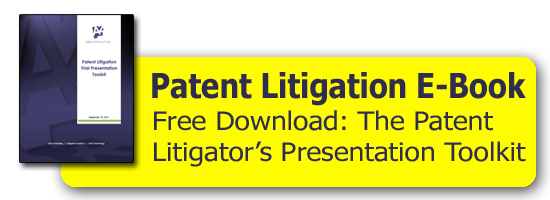One of the unusual techniques that we are using in patent litigation trial presentations is something we call Patent Comes Alive. This process begins with patent drawings and goes well beyond them.
Patent drawings themselves are a unique and highly specialized form of art. Their purpose, of course, is to illustrate the item to be patented and to show exactly what it is and what the patent applicant is claiming about the invention. For nearly all patents, the Patent and Trademark Office requires the applicant to furnish drawings.
That is not all: The Office also requires the drawings to be in a particular form.
Well-known patent blogger Gene Quinn has written that the Patent Office “specifies the size of the sheet on which the drawing is made, the type of paper, the margins, and many other hyper-technical details relating to the making of the drawings. The reason for specifying the standards in detail is that the drawings are printed and published in a uniform style when the patent issues, and the drawings must also be such that they can be readily understood by persons using the patent descriptions.”
But these very characteristics that make a patent drawing precise and capable of being relied on in court can also make the drawing lifeless and impenetrable. Our technique, “Patent Comes Alive,” takes an existing patent drawing and animates it, making it understandable to a jury.
In a case involving patent infringement of a paper/CD shredder, for example, we brought the patent drawing to life by animating it in a PowerPoint presentation. The animation made it easy for the jury to see not only how the shredder worked but how a competing product infringed upon the patent.
In another patent case, we started with a patent drawing of a vending machine patent. We looked inside the machine with animation, showing how it dispenses products.
In yet another patent litigation, we got a favorable outcome for a client in a major case involving coke drum de-header valves after we took a patent drawing and brought it to life.
This type of animation is yet another instance in which a skilled trial presentation consultant can illustrate a highly technical subject and make it easy for a lay juror to understand.
A patent drawing can be daunting and complex to someone who is not an engineer – yet basic tools such as PowerPoint, in the hands of the right courtroom consultant, can make the drawing a relevant and memorable part of a trial presentation.
Want to learn more? Download our newest and complimentary e-book: The Patent Litigation Trial Presentation Toolkit.





Leave a Comment